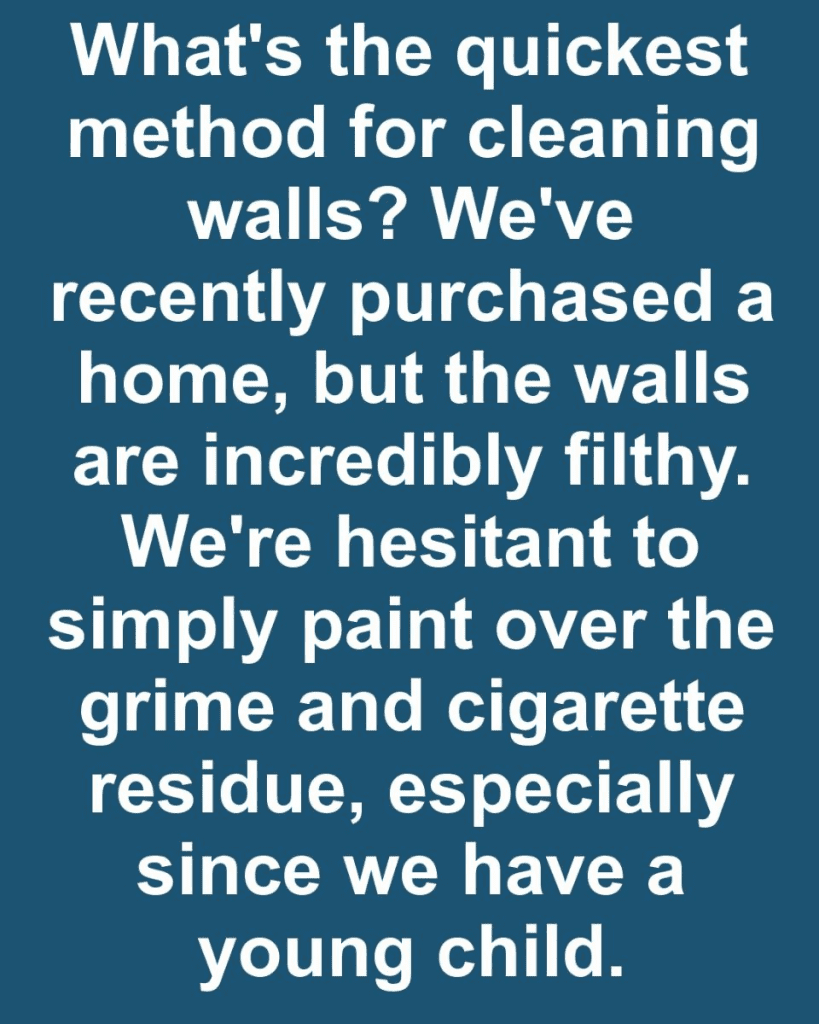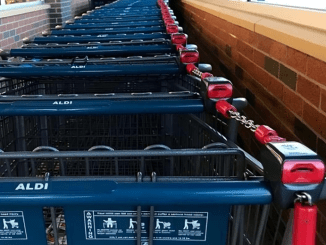Cleaning your walls is essential for a clean, healthy, and welcoming home, especially if you’ve recently moved into a space where stains and residues are noticeable. While it might seem easier to cover up the grime with a fresh coat of paint, thoroughly cleaning the walls first is key to achieving long-lasting results. Cigarette residue and general dirt not only affect aesthetics but also impact air quality and the health of your family. Here’s a step-by-step guide to deep-cleaning your walls, removing stubborn stains, and preserving the beauty of your home.

Assessing the Condition of Your Walls
Before diving into the cleaning process, it’s crucial to evaluate the current state of your walls. Are there visible stains, sticky spots, or discoloration? Are there signs of cigarette residue? Taking the time to identify the most problematic areas will help you determine which cleaning methods and products to use. Some sections may require tougher cleaning solutions, while others might only need a mild wipe-down.
The Risks of Painting Over Dirty Walls
It can be tempting to paint over dirty walls, but this shortcut often leads to more problems down the line. Smoke residue, for instance, can seep through paint layers, resulting in uneven finishes and unpleasant odors. Additionally, grime can affect the adhesion of the paint, causing it to peel over time. Painting over dirty walls may result in needing a fresh paint job sooner than expected, ultimately costing you more time and money. By addressing the dirt first, you’ll ensure a more professional finish and a healthier environment.
Essential Supplies for Effective Wall Cleaning
Before getting started, gather all necessary supplies to make the job easier. Here’s what you’ll need:
- Microfiber Cloths and Sponges: Ideal for gentle scrubbing and wiping.
- Buckets and Gloves: Essential for holding cleaning solutions and protecting your hands.
- Long-Handled Mop or Extension Pole: Helps reach high areas without straining.
- Trisodium Phosphate (TSP): A strong cleaner effective on cigarette stains and tough residue.
- Vinegar and Baking Soda: Natural, safe options for general cleaning.
- Protective Plastic Sheeting and Drop Cloths: For covering furniture and floors.
Be mindful of the type of paint on your walls, as glossy and semi-gloss finishes handle cleaning better than flat or matte finishes. Use gentle materials to avoid damaging your walls.
Preparing the Room for Wall Cleaning
Proper preparation is essential to avoid accidental damage and make the cleaning process smoother. Start by moving as much furniture as possible out of the room. For items that can’t be moved, cover them with plastic sheeting or a drop cloth. Don’t forget to protect the floors to catch any drips or splashes. Use painter’s tape to cover outlets, switches, and baseboards, keeping them safe from moisture.
By preparing the room in advance, you’ll avoid unnecessary mess and make cleanup much easier.
Choosing the Best Cleaning Agents for Different Stains
Not all stains are created equal, and different stains require different cleaning agents for the best results. Here’s a breakdown of some of the most effective cleaning solutions:
- Cigarette Residue: TSP is a highly effective cleaner for removing nicotine stains and sticky residue from cigarette smoke. It cuts through grime and prepares the surface for painting if needed.
- General Dirt and Grime: A simple solution of warm water and vinegar can cut through dirt and grease without harsh chemicals.
- Mold and Mildew: If you’re dealing with mold, use a solution of bleach and water to kill spores and prevent regrowth.
Always follow safety guidelines and wear gloves when using stronger cleaning agents like TSP or bleach. Test any cleaning solution on a small, inconspicuous area to ensure it won’t damage the wall.
Step-by-Step Guide to Cleaning Cigarette Residue from Walls
Removing cigarette stains requires a bit more effort due to the sticky nature of the residue. Follow these steps for best results:
- Dust the Walls: Use a dry cloth or microfiber duster to remove any loose particles.
- Prepare a TSP Solution: Follow the instructions on the packaging, mixing the correct ratio of TSP to water.
- Apply the Solution: Wear gloves and dip a sponge in the solution. Gently scrub the walls, working in sections from bottom to top to prevent streaks.
- Rinse with Clean Water: After scrubbing, wipe down the walls with a clean, damp cloth to remove any residue.
- Dry the Walls Thoroughly: Use a towel to dry the walls completely, which helps prevent mold and mildew.
TSP is powerful, so ensure thorough ventilation and avoid prolonged exposure to the solution.
Tips for Tackling Stubborn Grime and Mold
Some grime can be exceptionally tough to remove. Here are additional techniques for dealing with persistent stains and mold:
- Baking Soda Paste: For stubborn spots, mix baking soda with a bit of water to form a paste. Gently rub it onto the stain, let it sit, then rinse.
- Bleach Solution for Mold: Mold requires immediate attention to avoid health issues. Use a bleach solution to kill the spores, then scrub and rinse the area. Ensure the wall is dried thoroughly afterward to prevent mold from returning.
Natural Cleaning Solutions for Homes with Children
Safety is paramount when cleaning in homes with young children. Natural options like vinegar and baking soda are effective for most household stains without introducing toxic chemicals into your home. For a pleasant scent and added antibacterial properties, consider adding a few drops of essential oils like tea tree or lavender.
Natural solutions are safe and effective, allowing you to clean without worrying about chemical exposure for children and pets.
Ensuring Proper Ventilation and Drying
Good ventilation speeds up drying times and reduces the chance of lingering odors from cleaning solutions. After cleaning, open windows and use fans to circulate fresh air throughout the room. If you live in a humid area, consider using a dehumidifier to reduce moisture, which can help prevent future mold growth.
Proper drying is essential to maintain a fresh, clean environment and to avoid trapping moisture in the walls.
When to Consider Professional Cleaning Services
In some cases, professional cleaning services may be the best option, especially if the walls are extensively stained or the task feels overwhelming. Professionals have access to commercial-grade cleaners and equipment, making it easier to remove stubborn stains effectively and safely. Additionally, they’re trained to handle challenging situations, ensuring your home remains safe for everyone.
While hiring a professional comes at a cost, it can save time and effort and may be worth it for a more intensive clean.
Safety Tips for Cleaning in Homes with Young Children
Safety is always a priority, especially when cleaning in homes with children. Here are a few tips to keep in mind:
- Store Chemicals Securely: Keep all cleaning agents out of reach.
- Ventilate the Area Well: Open windows and use fans to prevent chemical buildup.
- Supervise Children: Avoid allowing children near freshly cleaned or wet walls to prevent accidents.
By following these guidelines, you can ensure a clean and safe environment for your family.
Conclusion: Clean Walls, Healthy Home
Regular wall maintenance is an essential part of creating a clean and healthy living environment. By addressing visible dirt and residue, you’ll enhance both the aesthetics and air quality of your home. A thorough cleaning routine with occasional deep cleans ensures your walls stay fresh, while preventive measures help you avoid stubborn stains in the future. With clean walls, you’re not only improving the appearance of your home but also protecting the well-being of everyone in it.


